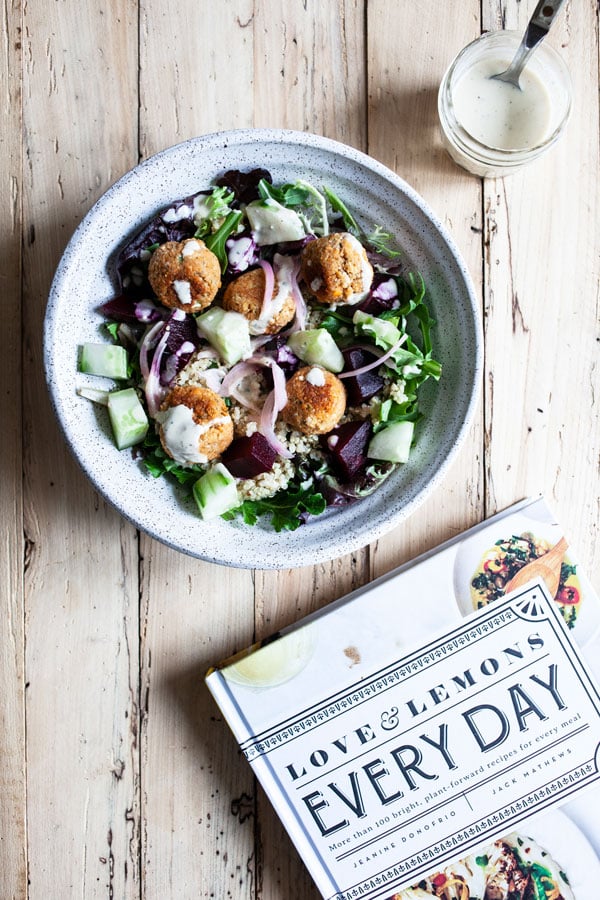
I’ve always espoused an “everyday” approach to cooking. I’m a home cook, not a chef, and I doubt I could pull off gourmet cuisine if I wanted to. Even when I eat out, I gravitate toward food that’s simple and filling; fancy (and fussy) preparations are never for me.
This isn’t to say that I don’t get lured in by showy meals or ambitious kitchen experiments. This was more true when I started blogging than it is now. Sometimes I read older recipes from the blog, or peek at recipes from my first two books, and I marvel at the fact that I had the time and patience for as many steps and ingredients as were called for.
Sometimes more is more—a little extra cook time or that one specialty condiment or spice really can make a big difference in a dish. But maintaining a home cooking routine over years and decades means constantly adjusting the process to fit the reality of one’s life. This year in particular has shown me that less can be more; with the DI, I haven’t had the time or the patience for recipes that are ambitious. And I’m less interested than ever in recipes that have a high risk to reward ratio. Trying and failing at recipes is a great teaching process, but right now I need recipes to work, if only because I don’t have the time to fix them.
All of this means that I’ve spent this year focused on recipes we might call “foolproof.” I’ve never liked that word as a recipe descriptor; it sounds so definitive, and cooking isn’t a perfect science. But you know what I mean. I’ve been turning to some of my favorite, old-school cookbooks (everything from Laurel’s Kitchen and the Moosewood books), and I’ve loved cooking through Power Plates again, focusing on the dishes that I know come together the most easily.
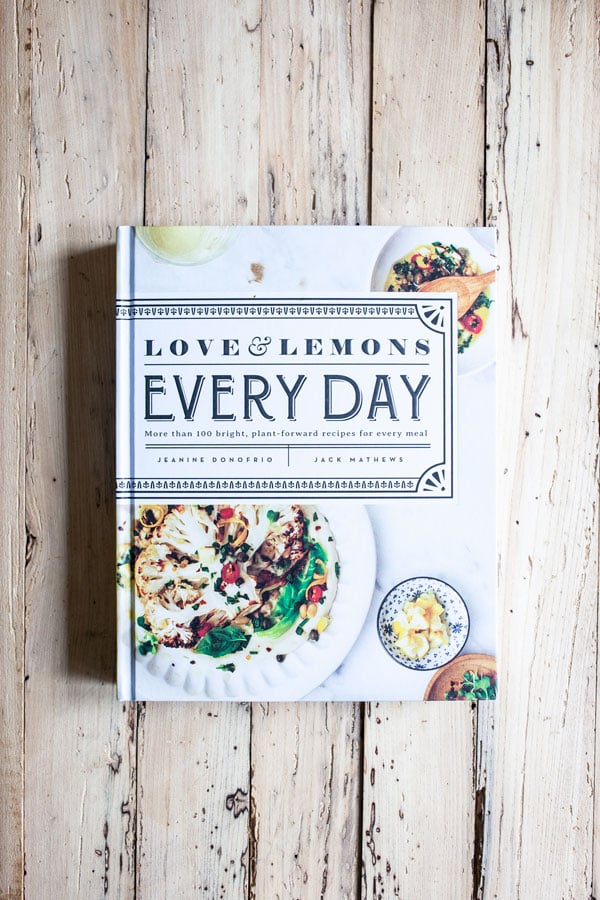
It’s a perfect time for me to have gotten my hands on a copy of my friend Jeanine’s beautiful new cookbook, Love and Lemons Every Day. It’s an extension of Jeanine’s popular blog, Love and Lemons, and her first cookbook, both of which are beloved for their simple, bright, wholesome recipes. Jeanine has a way of creating food that feels classic (and classy!) with short lists of ingredients and a cheery, welcoming approach. I can always turn to her work for a light, vegetable-driven pasta dish, a stellar salad, or a crowd-pleasing appetizer.
Love and Lemons Every Day is just what it sounds like: a collection of the recipes that Jeanine relies on in her own life, day in and day out. What I love most about this book isn’t only the emphasis on simplicity, but also Jeanine’s wizardry with vegetables. The book focuses on finding ways to use vegetables creatively: butternut queso, broccoli rice, sweet potato frosting. Sometimes using veggies as a base for everything (pasta, rice, sauce, etc.) strikes me as an attempt to keep calories low. In the case of this book, and Jeanine’s work in general, these sleights of hand feel like a genuine, enthusiastic celebration of fresh produce. And Jeanine includes a lot of tips on reusing vegetable scraps and avoiding food waste.
As I was flipping through the pages of the book, there were so many recipes I wanted to try, from Beet Muhammara Dip to Broccoli Rice Burritos, Zucchini Verde Enchiladas to Vegan Date Brownies. The book isn’t 100% vegan, but it’s close, and nearly all of the vegetarian recipes can be easily modified to be vegan.
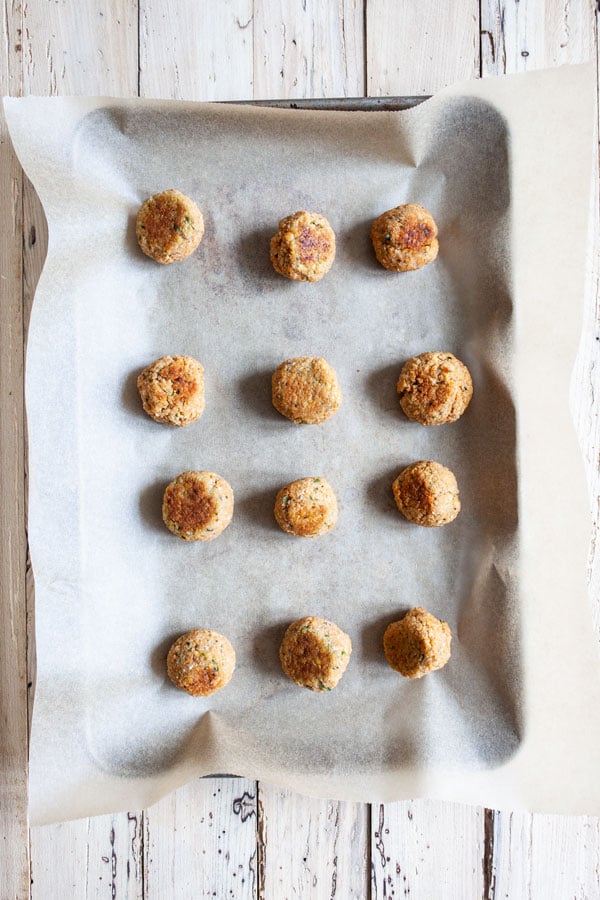
In the end, what I settled on was Jeanine’s red lentil falafel. Part of this was sheer curiosity about the technique: Jeanine gives lentils an overnight soak rather than boiling them, then adds them to the food processor (along with herbs and hemp seeds). I’d never thought to try this, but it works perfectly.
I also loved the idea of making these falafel because I knew they’d be easy to batch cook and freeze. And they are. I whipped them up late last week and am still making my way through them—plus I’ve got a bunch in the freezer for next week’s packed lunches. They’re savory, protein rich, and—thanks to garlic, parsley, and cilantro—full of flavor. Here’s the recipe!
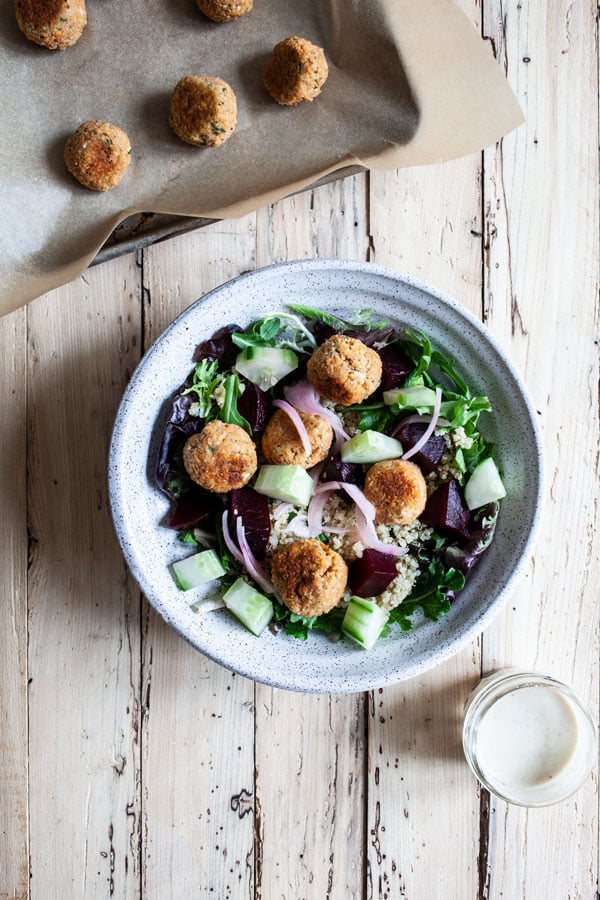
Jeanine Donofrio's Baked Red Lentil Falafel
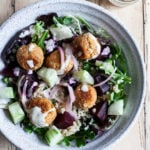
- 1 cup uncooked red lentils, soaked overnight, drained and rinsed
- 1 medium shallot, chopped (about 1/3 cup)
- 1/4 cup shelled hemp seeds
- 3 garlic cloves
- 1 teaspoon ground cumin
- 1 teaspoon ground coriander
- 1/4 teaspoon cayenne pepper
- 1 teaspoon lemon zest
- 1 teaspoon sea salt
- 1/4 teaspoon baking powder
- 1 cup chopped fresh cilantro leaves and stems
- 1 cup chopped fresh parsley leaves and stems
- 1 tablespoon extra virgin olive oil, plus more for drizzling
- 1/4 cup panko bread crumbs
Lemon Tahini Sauce
- 1/4 cup tahini
- 2 tablespoons fresh lemon juice
- 3 tablespoons water, plus more as needed
- 1/4 teaspoon sea salt
-
Preheat the oven to 425F and line a large baking sheet with parchment paper.
-
In a large food processor, place the soaked lentils (they’ll be plump but still raw at this point), shallot, hemp seeds, garlic, cumin, coriander, cayenne, lemon zest, salt, baking powder, cilantro, parsley, and olive oil. Pulse until well combined but not pureed. Use a spatula to scrape down the sides of the bowl as needed. Transfer to a medium bowl and stir in the panko.
-
Use a 2-tablespoon scoop to form the falafel mixture into 18 balls (be careful not to pack the balls too tight or your falafel will be dense). Place the balls on the baking sheet and gently press to form thick patties. Drizzle the patties with olive oil and bake for 10 minutes. Flip and bake for 7 minutes more or until golden brown and crisp on the outside.
-
Meanwhile, make the lemon-tahini sauce: In a small bowl, whisk together the tahini, lemon juice, water and salt. Thin with more water as needed for a drizzleable consistency.
-
Serve the falafel in pita, over a salad, or however you like, along with a big drizzle of the sauce!
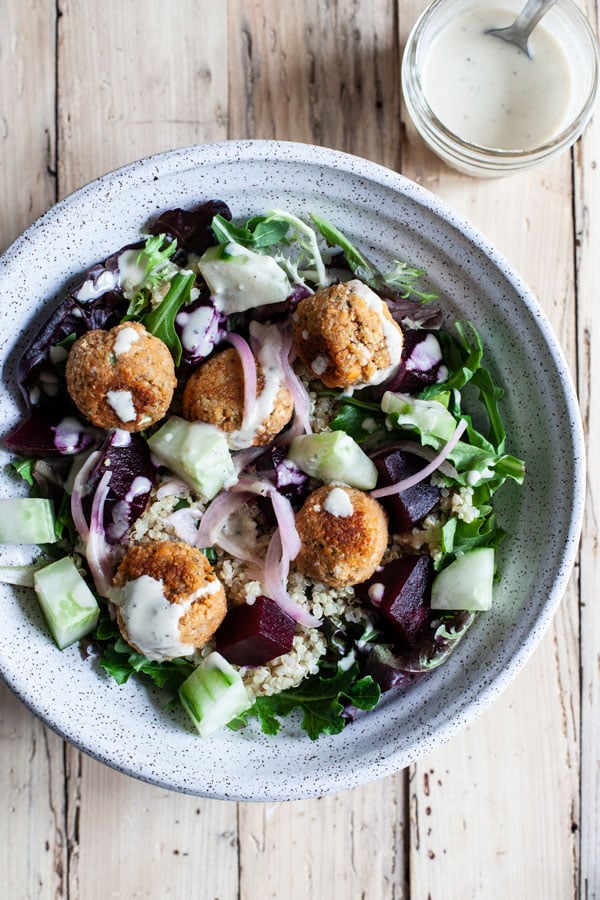
In the book, Jeanine recommends serving the falafel in pitas with chopped romaine, pickled onions, diced cucumber, radish, and herbs. I love this idea and can’t wait to try it: I didn’t have any pita on hand when I made the falafel, so I piled them over a quinoa salad with cucumber, beets, and pickled red onion—along with plenty of Jeanine’s tahini dressing—instead. It was great, and it’s a testament to the versatility of Jeanine’s recipe that this worked out so well.
If you’re curious about this colorful, seasonal collection, then you can enter the giveaway below to win a copy for yourself! US entries only please. I have a feeling that many of my readers will love the book as much as I do 🙂
I’ll announce a winner here in a week. Good luck, friends, and happy Tuesday. Later this week, a protein rich, easy new vegan lunch spread.
xo
The post Jeanine Donofrio’s Baked Red Lentil Falafel appeared first on The Full Helping.

0 comments